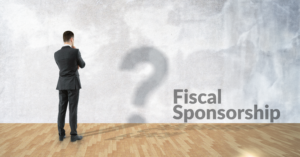The Coronavirus Aid, Relief, and Economic Security (CARES) Act was signed by President Donald Trump on March 27, with the objective to combat COVID-19’s crippling effect in the US Economy.
The Act provides multiple benefits for American families, individuals, and businesses that ranges across tax, regulatory, and reporting relief, as well as loans and grants.
While the Act considers individual and healthcare relief, this article will focus on the options provided for businesses, nonprofits, and self-employed individuals, covered in Division A, Title I – Keeping American Workers Employed and Paid Act and Division B.
Summary of significant relief for which businesses could apply:
-
Paycheck Protection Program
-
Emergency Economic Injury Grant
-
Other Small Business Debt Relief Program
-
Other Provisions of Keeping American Workers Employed and Paid Act
-
Reporting Relief for Businesses under Division B
PAYCHECK PROTECTION PROGRAM (PPP)
A loan program of the Small Business Association (SBA), the goal of this program is to prevent unemployment. The program provides cash-flow assistance through 100% federally guaranteed loans to employers who maintain their payroll at the same level during this emergency. The PPP is an extension/modification of Sec. 7 (a) of the Small Business Act.
For employers that maintain their payroll for three months, a portion of the loan would be forgiven. The goal is to help workers remain employed, as well as help small businesses and the US economy to snap-back more quickly after the crisis. PPP has a host of attractive features, such as forgiveness of up to 8 weeks of payroll based on employee retention and salary levels, no SBA fees, and at least six months of deferral with maximum deferrals of up to a year. Small businesses and other eligible entities will be able to apply if they were harmed by COVID-19 between February 15, 2020 and June 30, 2020.
The law provides for a total of $349 billion in loans and guarantees, with a maximum of $10 million disbursed per qualified business. The program is retroactive from February 15, 2020, in order to help bring workers who may have already been laid off back onto payrolls. Availability of the loans is until June 30, 2020.
Eligibility
To be eligible, a business must have been in operation on February 15, 2020. The requirement for eligible small businesses with applicable and valid concerns are further defined in the act, extending eligibility of previously defined Sec. 7 (a). The extension includes any business in operation before February 15, 2020, that has fewer than 500 employees, or otherwise meets SBA’s existing Size Standard in number of employees for the North American Industry Classification System (NAICS) industry as provided by SBA, if higher. The types of businesses include:
-
Small business concerns;
-
501(c)(3) non-profit organization – entities that are organized and operated exclusively for religious, charitable, scientific, literary, or educational purposes, for testing for public safety, to foster national or international amateur sports competition, for the prevention of cruelty to children, women, or animals, and any non-incorporated community chest, fund, cooperating association or foundation organized and operated exclusively for those purposes;
-
Individuals who operate a sole proprietorship or as an independent contractor;
-
Eligible self-employed individuals; and
-
Any business concern that employs not more than 500 employees per physical location of the business concern and that is assigned a NAICS code beginning with 72, for which the affiliation rules are waived. These include businesses in the hospitality and restaurant businesses, franchises approved by the SBA, and companies that receive funding through a Small Business Investment Company
Inclusion of entities without the “affiliation test” means that SBA is waiving the decision to consider whether a business’ affiliations preclude them from being considered “small”. Generally, affiliation exists when one business controls or has the power to control another or when a third party (or parties) controls or has the power to control both businesses.
An entity is limited to one PPP, registered under one Taxpayer Identification Number to prevent multiple loans to the same entity.
Eligibility for the loan is dependent upon the condition that the entity has not applied to the SBA for another loan for the same purpose (payroll coverage).
Receipt of Disaster Loans made after January 31, 2020 would disqualify an entity from receiving a PPP, unless the previously received Disaster Loans were made for different purposes (e.g. for example, if PPP was used to cover payroll for the 8-week covered period, SBA loan product for payroll cannot be used for those same costs in that period, although it can be used for payroll covering different period or for different workers).
Emergency Economic Injury Grant and Economic Injury Disaster Loan (EIDL) recipients and those who receive loan payment relief through the Small Business Debt Relief Program may apply for and take out a PPP loan as long as there is no duplication in the use of funds.
Loan Provisions
Channel of Disbursement. All current SBA 7(a) lenders are eligible lenders for PPP. The Department of Treasury will also be in charge of authorizing new lenders, including nonbank lenders, to help meet the needs of small business owners. For a list of authorized lenders, click here. As opposed to EIDL, the SBA works with lenders to provide PPP and other Disaster Loans to small businesses, and does not issue the loans directly. Scrubbed can help you check if your local bank is an authorized lender.
Requirements. Lenders may require additional documents for the PPP application. The following are the general requirements:
-
Business tax returns for three prior years
-
Personal tax returns for each principal owning 20% or more of the entity
-
2019 Federal Tax Returns (which is generally waived due to deferral of filing, accompanied with an explanation if not available)
-
Personal Financial Statements (SBA Form 413 Link) for each applicant (entity) and principal (owner) owning 20% or more of the entity
-
Applicant’s debt Schedule (SBA Form 2202 Link)
-
Corporate Records/Ownership Information
-
Business licenses
-
Loan Records
-
Business Description and history
For the purpose of this application, “Principals” mean:
-
For a sole proprietorship, the sole proprietor;
-
For a partnership, all general partners, and all limited partners owning 20% or more of the equity of the firm;
-
For a corporation, all owners of 20% or more of the corporation;
-
For limited liability companies, all members owning 20% or more of the company; and
-
Any Trustee (if the Applicant is owned by a trust)
We recommend preparing these, in conjunction with the PPP’s application form with lending institutions, in advance to minimize lag time of application. Your Scrubbed professionals can help you prepare the financial documentation needed to complete the application.
Demonstration of the following statement is necessary to apply for the loan: “Current economic uncertainty makes this loan request necessary to support the ongoing operations of the Applicant”.
Term. The remaining balance of the approved loan, less the forgiven portion, as stated by the SBA, shall have a term of 2 years. From the legislation, and as determined by lenders, these can have a maximum maturity of 10 years. It is optimal to clarify this with the third-party private lender upon application for the forgiveness.
Collaterals and Guarantees. Collaterals and guarantees are not applicable for the PPP.
Interest Rate and Acquisition Costs. Ideally, interest rate as determined by SBA shall be 1%. However, per the legislation, the interest rate is not to exceed 4%. This shall also be clarified with the third-party private lender upon application of the forgiveness. In addition, payments of principal, interest and fees not forgiven will be deferred for at least six months, but not more than one year. There would be zero loan fee and zero prepayment fee as advised. SBA shall be responsible in establishing fees caps for lenders that charge.
Purpose. Allowable uses of the loan proceeds are:
-
Payroll costs;
-
Costs related to the continuation of group health care benefits during periods of paid sick, medical, or family leave;
-
Insurance premiums;
-
Employee salaries, commissions, or similar compensations (excluding compensation above $100,000 and compensation of workers outside US, and qualified sick and family leave in the COVID-19 Relief Act;
-
Payments of interest on any mortgage obligation (which shall not include any prepayment of or payment of principal on a mortgage obligation);
-
Rent (including rent under a lease agreement);
-
Utilities; and
-
Interest on any other debt obligations that were incurred before the covered period
Loan Size
Depending on the entity’s situation, the loan size will be calculated in different ways, but will always be capped at $10 million. Computation of the size are as follows:
-
If entities are non-seasonal: Max loan is equal to 250 percent of average monthly payroll costs during the year prior to the loan date (2019)
-
If entities were seasonal and were operating between February 15, 2019 – June 30, 2019: Max loan is equal to 250 percent of average monthly payroll costs during that time period (12-week period beginning the first observation date). If your business employs seasonal workers, entities can opt to choose March 1, 2019 as your time period start date
-
If entities were not in business between February 15, 2019 – June 30, 2019: Max loan is equal to 250 percent of average monthly payroll costs between January 1, 2020 and February 29, 2020
-
If entities take out an EIDL between February 15, 2020 and June 30, 2020 and want to refinance that loan into a PPP loan, entities are encouraged to add the outstanding loan amount to the payroll sum
Qualified items in the “payroll costs” are as follows:
-
Compensation (salary, wage, commission, or similar compensation, payment of cash tip or equivalent)
-
Payment for vacation, parental, family, medical, or sick leave
-
Allowance for dismissal or separation
-
Payment required for the provisions of group health care benefits, including insurance premiums
-
Payment of any retirement benefit
-
Payment of State or local tax assessed on the compensation of employees
Items excluded in the “payroll costs” are as follows:
-
Employee/owner compensation over $100,000. Normally, applicants will use the average monthly payroll for 2019, excluding costs over $100,000 on an annualized basis for each employee. For seasonal businesses, the Applicant may elect to instead use average monthly payroll for the time period between February 15, 2019 and June 30, 2019, excluding costs over $100,000 on an annualized basis for each employee. For new businesses, average monthly payroll may be calculated using the time period from January 1, 2020 to February 29, 2020, excluding costs over $100,000 on an annualized basis for each employee
-
Taxes imposed or withheld under chapters 21, 22, and 24 of the IRS code
-
Compensation of employees whose principal place of residence is outside of the U.S. Strictly, payroll of U.S. Employees are the only ones covered in the PPP
-
Qualified sick and family leave for which a credit is allowed under sections 7001 and 7003 of the Families First Coronavirus Response Act
Your Scrubbed professionals can help you calculate the projected amount of the approved loans.
Debt Forgiveness
One of the most attractive features of PPP is that the Federal Government is willing to forgive a significant portion of the loan (up to the entire loan).
Forgiveness on a covered loan is equal to the sum of the following payroll costs incurred during the covered 8 week period compared to the previous year or time period, proportionate to maintaining employees and wages (excluding compensation over $100,000). Payroll costs are inclusive of all of the items defined above. In addition to this, any payment of interest on any covered mortgage obligation (not including any prepayment or payment of principal on a covered mortgage obligation) plus any payment on any covered rent obligation plus any covered utility payment incurred prior to February 15, 2020 are included in the forgiven portion.
Following the covered period, borrowers may submit an application to their lender for loan forgiveness. The following must be included in the application:
-
Documentation verifying the number of employees on payroll and pay rates, including IRS payroll tax filings and state income, payroll and unemployment insurance filings
-
Documentation verifying payments on covered mortgage obligations, lease obligations, and utilities
-
Certification from an authorized representative of your business or organization that the documentation provided is true and that the amount that is being forgiven was used in accordance with the program’s guidelines for use
The maximum amount of loan forgiveness will be reduced (but not increased) proportionally in accordance with any reduction in the number of employees or salaries during the covered period when compared to the prior calendar year.
The loan proceeds should be used to cover payroll costs, and most mortgage interest, rent, and utility costs over the 8 week period after the loan is made; and employee and compensation levels are maintained.
Borrowers who re-hire workers previously laid off from February 15, 2020 through 30 days after the enactment of the CARES Act, shall not have those numbers counted against them for loan forgiveness purposes, provided those workers are rehired no later than June 30, 2020.
Loan forgiveness will be provided for the sum of documented payroll costs, covered mortgage interest payments, covered rent payments, and covered utilities. Due to likely high subscription, it is anticipated that not more than twenty-five percent (25%) of the forgiven amount may be for non-payroll costs.
No eligible recipient shall receive forgiveness under this section without submitting to the lender that originated the covered 7 (a) loan the documentation required under subsection (e). A lender must issue a decision on the loan forgiveness no later than 60 days after receipt of the loan forgiveness application. For taxability purposes, canceled indebtedness under this section shall be excluded from gross income for purposes of Internal Revenue Code.
EMERGENCY ECONOMIC INJURY GRANTS
In summary, these grants provide an emergency advance of up to $10,000 to small businesses and private non-profits harmed by COVID-19 within three days of applying for an EIDL. To access the advance, you first apply for an EIDL and then request the advance.
The advance does not need to be repaid under any circumstance, and may be used to keep employees on payroll, to pay for sick leave, meet increased production costs due to supply chain disruptions, or pay business obligations, including debts, rent and mortgage payments.
Eligibility
The CARES act expands the eligibility of the EIDL and the corresponding grant to private non-profit organizations with an effective ruling letter from the IRS, granting tax exemption under sections 501(c), (d), or (e) of the Internal Revenue Code of 1954, or if the entity can provide satisfactory evidence from the state that the non-revenue producing organization or entity is a non-profit one organized or doing business under state law.
Excluded from eligibility are those entities that are principally engaged in teaching, instructing, counseling, or indoctrinating religion or religious beliefs, whether in a religious or secular setting, or primarily engaged in political or lobbying activities.
Amount and Duration
Ultimately, those eligible for an EIDL and who have been in operation since January 31, 2020, when the public health crisis was announced, are eligible to request a cash advance of $10,000.
The emergency grant does not need to be repaid, even if the grantee is subsequently denied an economic injury disaster loan. The grant may be used to provide paid sick leave to employees, maintaining payroll, meet increased production costs due to supply chain disruptions or pay business obligations, including debts, rent and mortgage payments.
The Grant is available from January 31, 2020 to December 31, 2020. The grants are backdated to January 31, 2020 to allow those who have already applied for EIDLs to be eligible to also receive a grant.
OTHER SMALL BUSINESS DEBT RELIEF PROGRAMS
CARES Act provides debt relief programs that aim to provide immediate relief to small businesses with non-disaster SBA loans.
Types of Loans
-
7 (a) loans – are affordable loan products of up to $5 million for borrowers who lack credit elsewhere and need access to versatile financing, providing short-term or long-term working capital and to purchase an existing business, refinance current business debt, or purchase furniture, fixtures and supplies. In the program, banks share a portion of the risk of the loan with SBA. Access different types of 7 (a) loans here
-
504 loans – provide loans of up to $5.5 million to approved small businesses with long-term, fixed-rate financing used to acquire fixed assets for expansion or modernization. It is a good option if entities need to purchase real estate, buildings, and machinery. You apply through a Certified Development Company, which is a nonprofit corporation that promotes economic development
-
Microloans – provide loans up to $50,000 to help small businesses and certain not-for-profit childcare centers to start up and expand. The average microloan is about $13,000. These loans are delivered through mission-based lenders who are also able to provide business counseling
Features
SBA will cover all loan payments on these SBA loans, including principal, interest, and fees, for six months.
This relief will also be available to new borrowers who take out loans within six months of the President’s signature of the Act (March 27, 2020).
OTHER PROVISIONS OF KEEPING AMERICAN WORKERS EMPLOYED AND PAID ACT
In addition to the debt relief and availability of loans and other grants, Title I of Division A of the Act delivers other support to combat unemployment.
Direct Appropriations. The Act provides for the following: $349 billion for loan guarantees and loan subsidies, $10 billion in EIDL grants, $17 billion for SBA to defer payments for six months on existing loans, $240 million for small business development centers and women’s business centers for technical assistance for businesses, $25 million for resource partner associations to provide online information and training, and $10 million for minority business centers for technical assistance for businesses.
Bankruptcy Process Flexibility. Section 1113 of the Act expands eligibility for the streamlined Chapter 11, Subchapter V small business bankruptcy process by increasing the debt limit for business and individual filers from $2.7 million to not more than $7.5 million excluding debt owed to affiliates or insiders. The section also adds flexibility to Chapter 13 bankruptcies by excluding federal aid from income in new filings and by allowing for plan modifications for previously confirmed Chapter 13 plans if income is lost directly or indirectly due to coronavirus, with maximum term of the plan extended to 7 years.
Entrepreneurial Assistance. Section 1103 of the Act provides financial assistance in the form of $265 million in grants to resource partners that provide education, training, and advice to qualifying small business concerns for the COVID-19 response. Section 1104 of the Act waives a statutory requirement to obtain cash contributions from non-federal sources for a three-month period for businesses under the Women’s Business Center program. In addition, Section 1108 of the Act provides $10 million in grants for the U.S. Department of Commerce’s Minority Business Development Agency to assist provide education, training, and advice to qualifying small business concerns for response to COVID-19 as well as providing assistance with accessing and applying for 7(a) loans. No matching of funds for these grants is required for a three-month period.
REPORTING RELIEF FOR BUSINESSES
Certain provisions would temporarily delay implementation of expected ASC Topics effective this year. Specifically, these pertain to FASB ASC Topic 326 – Financial Instruments—Credit Losses (CECL), and suspension of requirements related to accounting* for a troubled debt restructuring (TDR), for certain entities. This means that legislation supersedes authority of FASB and SEC to regulate requirements for financial reporting on these specific topics.
Section 4013. A financial institution may elect to not apply GAAP requirements to loan modifications related to the COVID-19 pandemic that would otherwise be categorized as a TDR, and suspends the determination of loan modifications related to the COVID-19 pandemic from being treated as TDRs. Modifications in the scope of the suspension include forbearance agreements, interest-rate modifications, repayment plans, and any other similar arrangements that defer or delay payments of principal or interest.
The relief from TDR guidance applies to modifications of loans that were not more than 30 days past due as of December 31, 2019, and that occur beginning on March 1, 2020, until the earlier of (a) Sixty days after the date on which the national emergency related to the COVID-19 outbreak is terminated, or (b) December 31, 2020.
The suspension of TDR accounting* and reporting guidance may not be applied to any factor that isn’t related to the COVID-19 pandemic.
Section 4014. No insured depository institution, bank holding company, or affiliate will be required to comply with FASB Accounting* Standards Update (ASU) 2016-13, Measurement of Credit Losses on Financial Institutions, beginning on the date of the enactment (March 27, 2020), until the earlier of (a) the date on which the national emergency related to the COVID-19 outbreak is terminated or (b) December 31, 2020.
The deferral is only applicable to “insured depositary institutions, as defined in the section 3 of the Federal Deposit Insurance Act (12 U.S.C. 1813). Other entities are required to comply with the effective dates originally set for ASC 326.
WE’D LOVE TO HELP.
We will continuously update you with news and analysis of legislative and administrative acts that are designed to provide relief from the economic effects of the COVID-19 pandemic. . For immediate questions, guidance and clarification, please contact us at [email protected] or discuss it with your Scrubbed professional
Disclaimer
The information contained herein is of a general nature and is not intended to address the circumstances of any particular individual or entity. It is not intended to be relied upon as accounting*, tax, or other professional service. Please refer to your advisors for specific advice. Although we endeavor to provide accurate and timely information, there can be no guarantee that such information is accurate as of the date it is received or that it will continue to be accurate in the future. No one should act upon such information without appropriate professional advice after a thorough examination of the particular situation.





